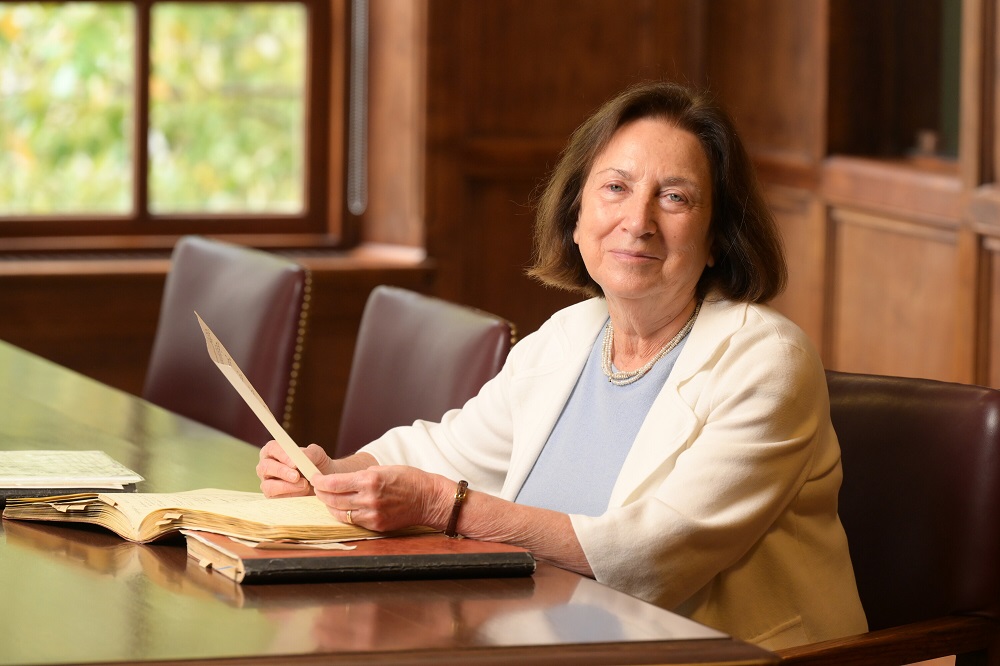Her scientific breakthrough took 5 years. Getting credit took decades.

Svetlana Mojsov
Svetlana Mojsov, a research associate professor at The Rockefeller University has spent decades researching how peptides and small proteins regulate our bodies’ processes. In the 1980s, she determined how a certain hormone, known as glucagon-like peptide 1 (GLP-1), triggers the pancreas to produce insulin.
Her discovery opened up whole new therapeutic approach to hyperglycemia, ultimately paving the way for development of Ozempic, Wegovy, and Victoza—blockbuster drugs now used by millions to manage diabetes and lose weight. Yet even as a handful of scientists received prominent laurels for these pharma breakthroughs, Mojsov’s contribution was repeatedly sidelined. Over the years, she successfully fought to have her name included in GLP-1 patents as a co-inventor and corrected papers in high-profile journals that omitted her findings.
Recent stories in Science and STAT each shined a spotlight(opens in new window) on Mojsov’s long-overlooked career(opens in new window), which began at Rockefeller in 1972 when she joined the lab of Nobel Prize–winning biochemist Bruce Merrifield. We spoke with Mojsov about the origins of her discovery and what larger lessons the scientific community can take away from her experience.
How did you come to publicly discuss your role in the creation of these drugs?
When some of my classmates and colleagues from the Merrifield lab learned that I wasn’t receiving recognition for my critical contribution for the discovery of GLP-1, they urged me to speak up.
So it really came because of support from other scientists.
That’s right. For years, I wasn’t concerned, because I always thought my papers would speak for themselves. But high-profile journals were publishing papers that downplayed or omitted my contributions. That’s when I decided to stand up for myself.
You first researched diabetes as a student at Rockefeller. How did that come about?
When it came time to choose my Ph.D. project, Bruce Merrifield asked me to find a subject I’d be excited to work on for years. I chose the hormone glucagon because I wanted to work on something with medical implications. Glucagon raises blood sugar, so we wondered if suppressing it could treat type 2 diabetes. We needed to create glucagon analogs to study glucagon biology. Dr. Merrifield had developed a method of synthesizing peptides called solid phase peptide synthesis, but other scientists told me no one had been able to use it for glucagon. Merrifield insisted, “You should not be discouraged.”
And I made it work. It took me three and a half years past my Ph.D.—I stayed on as a postdoc to complete it. I wasn’t going to leave until I was done! And it was so fulfilling. When you design an experiment, do it with your own hands, and actually show that it works, it’s fantastic.
In a way, my discovery of GLP-1 at Massachusetts General Hospital in Boston was a continuation of what I did at Rockefeller. I think of it as a tribute to Bruce Merrifield.
Ozempic, Wegovy, and Victoza are now used by millions of people. How does that feel?
It’s really gratifying. The first drug that came on the market, Victoza, was based on the GLP-1 sequence I discovered. That made me feel professionally and personally fulfilled. Others who worked on GLP-1 have gotten awards, but I felt that when it became a drug, that was my award.
What kinds of reactions have you received to your story?
I am surprised how much support I’m getting. One of the best things is that I’ve gotten so many nice emails from my classmates from Merrifield’s lab and from Rockefeller colleagues. I don’t read social media, but I’m told there is a lot of support there as well. I didn’t expect it to make such a difference. But I guess people relate to the story.
In what sense do you think people relate?
I’ve gotten responses from so many women who have felt bias in their careers. For me, I have this deep-seated feeling that I just chose a profession I was interested in. I grew up in Yugoslavia in the ’60s, with the idea that there were no “men’s” and “women’s” professions. So when I came here in 1972, I never felt that I was entering a men’s profession.
But I think there’s a broader point in my experience about problems with how scientific knowledge is being disseminated.
In what sense?
When a paper omits research that is relevant or that it was built upon, it has a snowball effect on future citations and research. That is, if your work is overlooked in a paper that it should be referenced in, a future paper citing that paper will also not include your work. And so on. Over time, research gets erased.
How do you think such issues can be addressed?
The key is to cite the primary papers. This isn’t a radical idea—it’s what I was taught in graduate school by Sid Strickland.


